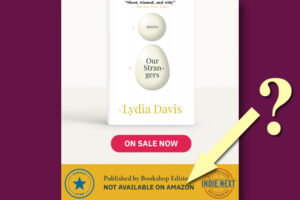Should My Post Be This Long or That Long?
Indeed. How long should your book be?
Should it be 100 pages? 200 pages? 300 pages? More?
The easy answer is – it should be as long as it needs to be.
The not so easy answer is – your book should reflect the reading choices of your audience.
When you work with us at Nurturing Big Ideas and Old Dog Learning, one of the first things we do is establish who you audience is.
For whom are you writing the book?
Generally, people choose a wide and deep audience. For instance, you might say, “It’s for women over 50.”
That’s all well and good, but women over 50 is an enormous audience. You can’t possibly hope to or need to write for ALL women over 50.
If your book is a self-help book of spiritual teachings, your audience is probably a select group of women over 50 – those who are spiritual. That’s a start. Now drill down a little deeper to look at women over 50 who are going through a tough time right now and looking for spiritual guidance.
That’s good. You’re you’re getting somewhere, now. Within that group you can drill down even further to women over 50 who are looking for spiritual guidance to help them deal with Covid issues/family issues/medical issues.
 The goal is to create as tight a group of readers as possible.
The goal is to create as tight a group of readers as possible.
This does not mean other people – in this case, other people looking for spiritual guidance for reasons other than Covid, family or medical problems – won’t read your book. They very well may.
It means the group you identify as most likely to need and want your message is the core group you are writing to reach. All others may eagerly buy your book at will, but you are not focused on them. You are focused on what I call your core market.
Your core market will drive how long your book should be.
We’re Talking Nonfiction Here
If I were to take a poll today and ask people how long a book should be, you can guess at how many answers I would receive.
I did this in a small group on Facebook and the answers were much as I expected. (ladies, if you’re a book person, you are welcome to come join the group, it’s about writing, books, reading, life, and all the stuff in-between, come be a member)
Most people said 300 pages was too long.
However, several people said 300+ pages is fine if the topic is a good one and the writing is well done.
I did specify that the book be a business book, not a novel. We’re not talking novels here. Good golly, if we were talking novels Stephen King would never be so popular. As this article in Writer’s Digest puts clearly.
Business books, or nonfiction books, to be more specific, are written for select audiences and serve those audiences well if they pay attention to how the people in the audience read.
An easy way to determine this is to look at other books that are similar to yours. Go to Barnes & Noble (and as of Dec of 2021 they still have physical stores) and visit the section your book would fit in and check the page count of the published authors you see there. You can generally tell how long the book is by looking at the width of the spine.
Most of the books you see there will have been published by traditional publishers and they are keen to keep their authors on track for at least a modicum of sales. This often means they decide how long the book should be. But be assured, they chose the page length very carefully. They know what readers want and they aim to deliver.
For indie authors, which all of my clients are, it’s best to take time to understand what goes into a 200 page book, and why it’s so popular at the moment.
A Good 200 Page Book Includes
Often, when considering page count, authors forget front matter and back matter. They’re included in your page count.
Front matter includes:
- Testimonials (from beta readers)
- Copyright page
- Dedication
- TOC (table of contents)
- Acknowledgements
- Foreword
- Introduction
Each of those may take up one, two, or more pages. Also consider, books are not created one page at a time. They are produced in blocks. So some of the items in that list will have empty pages on the flip side. Those pages count in the overall page count, also.
Let’s say you have five pages of testimonials. You will likely have a blank page following the very last testimonial. It will be numbers.
Your copyright page is one page.
Your dedication might be two.
Your acknowledgements will generally be one page.
Your foreword could be 2, 3, 5, 7, depending on the person writing it.
Your introduction will be as long as you need it, but let’s try and keep it to 5 pages.
You already have up to 16 pages and you haven’t even started numbering the actual book pages!
p.s. if you have back matter – an index or end notes – they will be part of the overall numbering also.
After Front Matter You Need to Consider the Size of the Book
Here’s where the fun comes in. You have a variety of choices on how to size your book, today. We can start with a standard 6″ by 9″. That’s standard trade size. Our book, The HOW TO WRITE A BOOK Book is 5.5″ by 8.5″.
Currently, we’re working with an author who has chosen 5 1/4″ by 8″ which will increase his page count, which is fine because his book is short and to the point, well written and educational. The size he’s chosen is perfect for it.
You can play around with size to help meet your need to fulfill whatever page count you think is important for your book. Longer or short, the size of the book can help make that happen.
Always remember that you need to figure in your spine, also. Your spine must be big enough to accommodate the content that will go on it – the book’s title, publisher, and author. The publisher is usually a graphic image, but it needs to be recognizable.
Your Book Will Be As Long As It Needs To Be, Except…
When we work together, Tom and I keep our eye on the book length as the book is being written. Each chapter’s page count is noted and if we are getting close to the 200 page count, and only half of the book has been written, it’s time to step back and reconsider a few things.
Should we continue and produce a 250 – 300 page book or are there other options?
(The article above might give you even more insight. Yes, he agrees with me.)
Not all the content you want to write needs to be in your book, in this book, right now. You should save some for the next book. And for speaking engagements. When speaking, you must bring the current book and read from it, but also have stories that are not in the book to share.
The length of a book is not determined by saying, “I’m going to write a 200 page book and it will be a best seller.” Some people say that, but it’s not true. You will write the book you need to write. You will have it edited, by me or someone else, and the editor will help you determine if your book is the right length – and too long is usually not the issue. Best seller status is a whole post of its own.
The issue, more often than not, is this – writers plan on writing that 200 page book and find themselves floundering at 100 pages.
That is where a developmental editor, such as myself, can be a very big help in getting your book to the page count it should be, whether that’s 125, 150, or 200 pages. Your reader wants the content and isn’t concerned with the size of the book – unless it’s so huge she knows she will never get through it all.
Little or big, short or long, your book is a masterpiece. It’s a product of your hard work. Give it the chance it deserves by bringing on the right people to help you along the journey to becoming “the author of”.







Leave a Reply